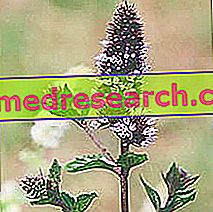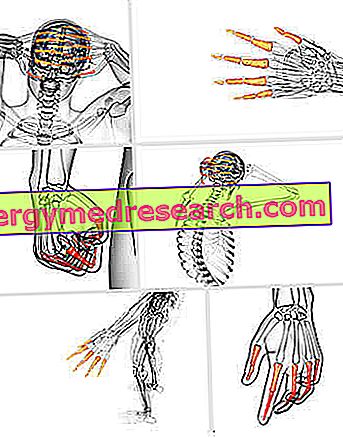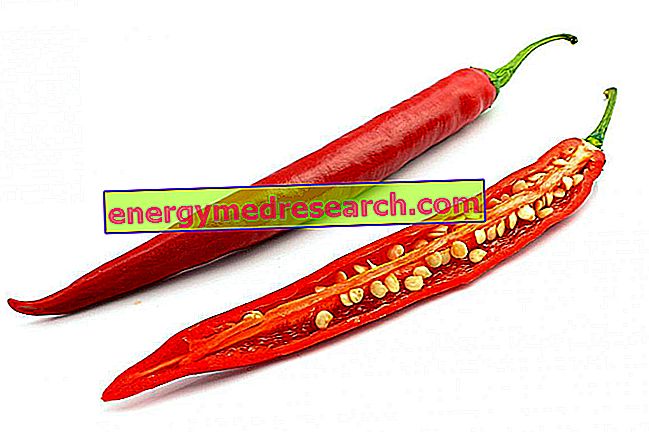
Scientific name
Mentha piperita
Family
Labiatae
Origin
Hybrid obtained from three species ( M. longifolia x M. rotundifolia -> M. spicata x M. aquatica ).
Used Parts
Drug consisting of leaves (Official Pharmacopoeia).
Chemical constituents
- Essential oil (menthol, menton, mentofuran, eucalyptol, limonene);
- Flavonoids (mentoside, diosmin);
- Phenolic acids (rosmarinic, caffeic, chlorogenic);
- triterpenes;
- Tannins;
- Azulenes.
Mint in Herbal Medicine: Mint Properties
Mint is used as a corrector of taste in numerous foods, herbal teas, galenic preparations and drugs, even if folk medicine identifies it as the digestive remedy par excellence.
Important antispastic activity on the smooth muscle cells of the digestive and respiratory systems; moreover, it boasts decongestant and balsamic activities, that is, fluidifying the respiratory secretions.
Biological activity
Mint is a plant with many properties and is widely used in herbal medicine. More in detail, this plant - especially its leaves and the essential oil extracted from them - has spasmolytic properties ascribed to the gastrointestinal and airways, carminative, cholagogue, antibacterial, secretolytic and even analgesic.
In this regard, several studies have been conducted to verify the real therapeutic efficacy and most of the aforementioned activities have been confirmed.
A study conducted on the analgesic capacities of mint essential oil has shown that this - applied externally - is able to alleviate the pain caused by tension-type headache. In fact, it seems that the aforementioned oil is able to exert the analgesic action by acting directly at the source of the painful stimulus, through a modification in the sensitivity of the pain receptors.
Other studies, however, have confirmed the antispasmodic properties of the essential oil of mint at the level of the gastrointestinal tract, showing that the use of this oil is not only useful in case of dyspeptic disorders, but is also useful in preventing or reducing gastrointestinal spasms during particular types of diagnostic tests, such as, for example, barium enema.
Mint against dyspeptic disorders and spastic symptoms of the gastrointestinal tract
As mentioned, thanks to the antispasmodic, carminative and cholagogue activity of which mint is equipped, the use of its leaves and its essential oil has been officially approved for the treatment of dyspeptic disorders and to counter the spastic symptoms of the gastrointestinal tract associated with flatulence, abdominal pains and cramps.
Furthermore, mint essential oil has proved effective in counteracting the aforementioned symptoms even in patients with irritable bowel syndrome.
For the treatment of these disorders, mint must be taken internally.
When using the leaves, generally, the recommended daily dose is about 3-6 grams of drug.
When, on the other hand, the essential oil of mint is used, it is usually recommended to take about 6-12 drops of the product.
In patients with irritable bowel syndrome, we recommend taking 0.6 ml of essential oil per day, to be taken in the form of coated capsules.
However, for more information about the uses of mint in the treatment of gastrointestinal disorders, we recommend reading the article dedicated "Treating yourself with Mint".
Mint against diseases of the upper respiratory tract
Thanks to the antibacterial, secretolytic and balsamic action of which the essential mint oil is equipped, its use has obtained official approval for the treatment of inflammations and catarrhal diseases of the upper airways.
Also in this case, for the treatment of the aforementioned disorders, the mint must be taken internally.
The recommended daily dose is about 6-12 drops of essential oil per day. Alternatively, fumigations can be carried out by diluting 3-4 drops of essential oil in hot water.
Mint against neuralgia and muscle pain
Mint essential oil has proved to be an excellent analgesic remedy even in the case of muscle pain and neuralgia.
In this case, the oil must be used externally. Generally, it is recommended to apply a few drops of the product directly on the affected area, from two to four times a day.
Mint in folk medicine and homeopathy
In folk medicine, mint is used in the treatment of various disorders, such as: nausea, vomiting, colds, respiratory tract infections and dysmenorrhea.
Mint is also used in homeopathic medicine, where it can be found in the form of granules, mother tincture and oral drops.
In the homeopathic environment the plant is used in case of colds, dyspepsia associated with flatulence, aerophagia and biliary colic.
The dose of homeopathic remedy to be used may vary from one individual to another, also depending on the type of disorder to be treated and the type of homeopathic preparation and dilution that you want to use.
See also: peppermint essential oil in cometici
Contraindications
Avoid taking mint in case of hypersensitivity to one or more components, in patients with glaucoma or thyroid diseases and in patients with bile duct obstruction, cholelithiasis and / or severe liver damage.
Furthermore, the use of mint is not recommended even during pregnancy, breastfeeding, infants and young children.
Side effects
Following the intake of mint may appear allergic reactions, hepatotoxicity (shown only for Mentha pulegium ), nausea, dizziness, increase in gastroesophageal reflux.
Furthermore, following the application of mint essential oil to the skin, skin irritation may occur.
Pharmacological Interactions
Mint may interfere with the activity of drugs, such as:
- Calcium channel blockers, since the concomitant intake of mint essential oil could reduce the therapeutic efficacy of these same drugs.
- Drugs metabolised by CYP1A2 and CYP2E1, since mint is able to inhibit these cytochrome P450 isoforms and may therefore affect the activity of the drugs they metabolize.



